When the water comes home
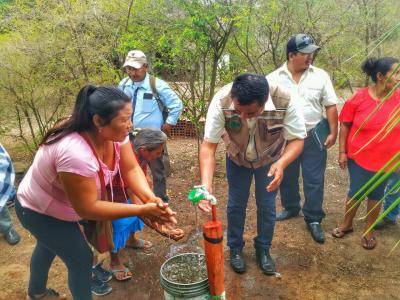
The community of La Asunta in the Indigenous territory of Lomerío inaugurated the installation of a drinking water system operating with solar panels.
Although the project aimed to realize a basic human right to life, the new network ended up generating an additional benefit in the context of Covid-19: maintaining social distancing without rushing around a tap and being able to wash one's hands. hands at home. The project also includes the protection of the forest which is the source of water recharge for the lagoon.
By Damián Andrada
On November 14, the indigenous Monkox ɨ people of Lomerío inaugurated a system of pipes and 17 taps that will provide drinking water to 35 families and 150 people living in the community of La Asunta. This infrastructure project also included training community members to protect the high forest that surrounds the lagoon and is the main resource for maintaining the water supply through rain.
The leader of the Indigenous Navigator project, Ángela Agreda, explains that the water network is an integral project that promotes the interrelation with nature : “The more there is high forest, the more water there is. The forest sucks rainwater from underground sources. On the other hand, if there is no vegetation, the ground becomes harder. So when it rains, instead of filtering, the water flows. Forests attract rain and provide higher humidity. Then the springs are preserved with water. In La Asunta, community members must conserve 1,200 hectares of forest surrounding the cut and ensure water recharge ”.
The link between the lack of forest and the scarcity of water is clearly observed in the neighboring community of Palmira, where the water recharge area has been deforested by the everyo carried out for agriculture and animal husbandry, causing the drying up of the lagoon. Thus, the training provided by Fundación Natura, an NGO specializing in the environment, placed a strong emphasis on the need to protect trees and plants near the lagoon of eacho.
Exceptional: “The larger the forest, the greater the quantity of water. The forest sucks rainwater from underground sources. "
The authorities point out that the inauguration of the drinking water system took place in the midst of Covid-19. When the pandemic began, the indigenous Monkox ɨ people of Lomerío were very frightened. After the contagion and the death of a member of the community, no one left their home for two weeks, they did not have enough to eat and they were able to overcome the situation thanks to the reciprocity between the communities. For their part, the authorities have carried out radio broadcasting campaigns, stressing the importance of hand washing.
In this context, Agreda explains that the plumbing system has provided an additional benefit to the health of the community: they no longer need to collect water from other communities and can wash their hands at home. House. “Thanks to the connection, many families already have access to water in their homes. In this way, we avoid gathering around a tap. The fact that the water reaches the house also helps to achieve social distancing and disinfection, ”concludes the sociologist.
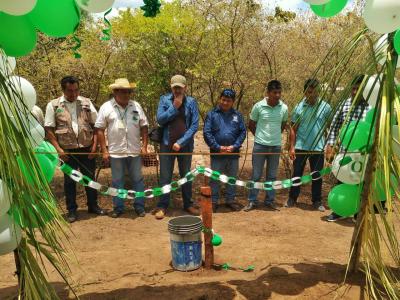
A dream come true
Access to drinking water for families in La Asunta has also become a source of pride for the community, which plans to continue to integrate taps into the water network. Don Agustín García Choré is the first great chief of the Chiquitana Indigenous Organization (OICH), the organization founded in 1995 which brings together 10 indigenous centers and two Cabildo associations with a presence in the lowlands of Bolivia. The authority says that the assembly chose as beneficiary the community which suffered the most from the drought, where the inhabitants had to transport the water between two and three kilometers in a jar, on the head or on a donkey. In addition, they have a nearby lagoon that fills up during the rainy season and a forest that allows water recharge.
The First Grand Chief recalls that the fires which affected the dry forest of Chiquitano in August and September 2019 attacked the water recharge source which protects the lagoon and burned the cargo tank and the network of pipes which draw water from the lagoon. lagoon. Likewise, the political crisis and blockades of November last year affected the transfer of pipelines, pump and construction materials. As if that were not enough, with the arrival of SARS-CoV-2 in Lomerío, masons and plumbers had to deepen care in an activity where social distancing is difficult to respect. Don Agustín himself was one of the workers who suffered from the disease and had to withdraw from the project.
Remarkable: “As if that were not enough, we are also contributing to the preservation of the forest, a source of water recharge for the lagoon, but also a source of life, biodiversity and climate maintenance . "
“The system is fairly recent: we have installed all the equipment without using energy from the electrical network. It was economical compared to what the municipal government did. I am satisfied, happy and content because we conform to the community. People have water in their homes and they are happy. And why shouldn't I be happy? In addition, as if that were not enough, we are also contributing to the conservation of the forest which is a source of water recharge for the lagoon, but also a source of life, biodiversity and climate maintenance ”, explains the First Grand Chief of the OICH.
As a technician in territorial management at NUR University, Agustín García Chore explains the complexity of the infrastructure: a pump has been placed in the lagoon, a space has been opened through which the main pipe passes to the community, Air vents were added and dug to locate the pipe that carries water to the faucets. The solar panels were then installed, training was given for their maintenance and the operation of the collector was explained. The last step was the commissioning of water treatment equipment imported from Brazil that keeps the water clean for 30 days using organic products.

The technician from the Indigenous Center of Indigenous Communities of Lomerío (CICOL) Reina García García is one of those who is also delighted with the project: “For me, as Lomeriana, it's good because La Asunta did not have of water for years and it was provided by another community. Now they have drinking water in their own house and it comes from a lagoon with a huge amount. Unlike in previous years, this time he will not be absent ”.
Agreda says that at first the community members did not believe in the project, but as the work schedules and the delivery of materials were respected, they began to trust. The Native Navigator Coordinator adds: “The joy of the community members was very exciting. La Asunta will be the only community to have drinking water because it has a watermaker and a submersible pump running on solar panels ”.
Highlight: Women in the community have seen their quality of life improve, as they are responsible for finding the water they will use to prepare meals for their families.
In addition, the connection came in a period of drought, when the first problems with access to water were observed. After the inauguration, the members of the community are attentive to take care of the well and to plant trees like the bibosi and plants like the butterfly (a kind of patujú whose flower is white) which, according to the beliefs of the Chiquitanía and the Amazon, attracting the Jichi del Bosque : the owner of the water which, if it remains in the lagoon, the water is plentiful. Likewise, the community has already banned each and deforestation of areas near the lagoon.
For the García García technique, the water system also produced unforeseen benefits amid the pandemic: “In this time of Covid-19, the people of La Asunta do not have to go to another community and gather around a pump. Now they have water at home. At first there were only eight taps, but families in the community funded the rest of the facilities. He exceeded expectations ”.
Like other projects that have an impact on the health care system, women in the community have seen their quality of life improve, as they are responsible for finding the water they will use to prepare food for their families. . With taps in their homes, they no longer have to waste time walking for miles or the effort of loading water into jars or buckets.
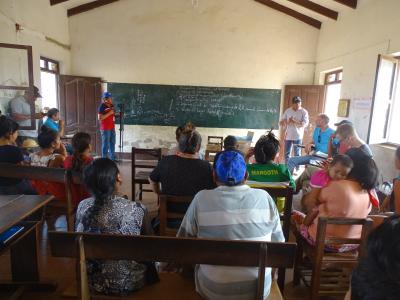
For more drinking water
The Indigenous Navigator project is a global tool for the realization of the rights of indigenous peoples. It is funded by the European Union and in Bolivia, it is coordinated by the Center for Legal Studies and Social Research (CEJIS). For training on water recharge and maintenance of the high forest, an alliance has been signed with the Fundación Natura. In the Indigenous territory of Lomerío, the Monkox ɨ people selected and implemented two projects: the recovery of the Bésiro language and access to drinking water.
In this way, the installed plumbing system complies with one of the United Nations Sustainable Development Goals: ensuring the availability of clean water, as well as sustainable management . The resource being obtained through a lagoon whose water recharge is done by the high forest and the rains, the project also contributes to the conservation of terrestrial ecosystems and to the fight against climate change through the protection of vegetation and l use of solar energy.
The installation of the pump, taps and pipes from the lagoon to the homes was carried out with respect for social distancing. In the workshops, biosecurity materials such as chin straps and alcohol gel were used, and the spaces were kept ventilated. From this experience, the municipality has realized its feasibility and they have the desire to reproduce it in other communities. Although initially there were plans to install eight faucets, they ended up installing 17 faucets and they plan to increase the number.
Highlights: In the midst of a pandemic, the Indigenous Monkox of La Asunta are no longer forced to walk miles to another community to access water, avoiding the crowds around a tap.
The World Health Organization (WHO), governments and the media have disseminated preventive measures against Covid-19 ad nauseam: social distancing, use of a mask, ventilate rooms and wash hands. If, in principle, they require the goodwill of the citizens, the problem arises when there are structural conditions which do not allow them to be achieved. This happened until a few weeks ago for the inhabitants of the La Asunta community of the Indigenous territory of Lomerío.
Today, access to drinking water does not only allow the realization of a human right. In the midst of a pandemic, the indigenous Monkox ɨ
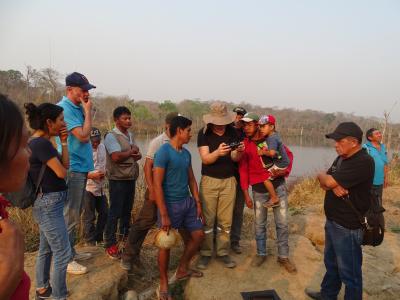
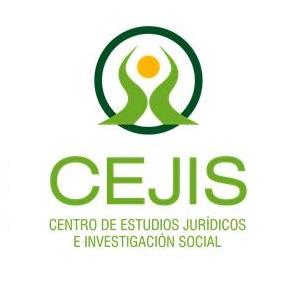
El Centro de Estudios Jurídicos e Investigación Social (CEJIS)

Contact
Angela Agreda Farel
